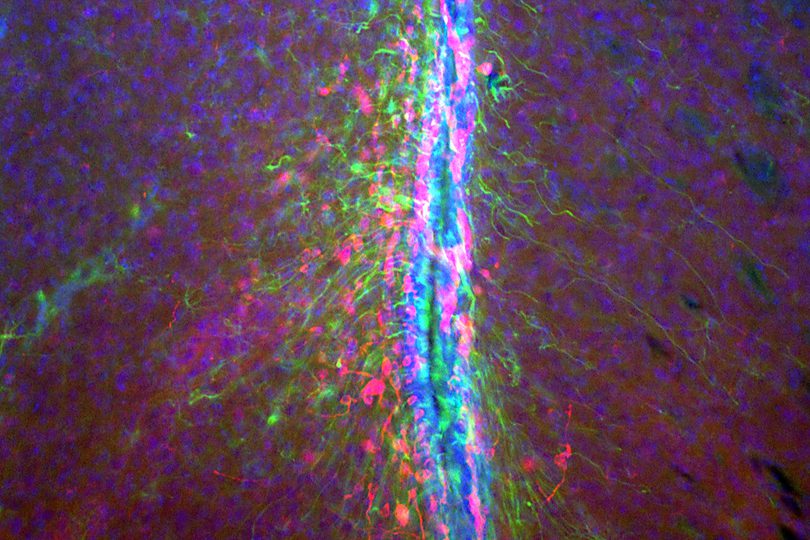
Dendritic cells derived from a patient’s own skin cells promise to be the ideal starting point for the development of effective new cancer therapies.
A team of researchers led by Dr Paul Fairchild, Co-Director of the Oxford Stem Cell Institute, has developed a method of turning skin cells taken from a patient into large numbers of dendritic cells. This breakthrough may lead to the development of new cancer therapies.
In the past, scientists have extracted dendritic cells from cancer patients, exposed the dendritic cells to cancer cells in the lab, and then re-injected them into the patient. These activated dendritic cells then activated cytotoxic T-cells and showed some success in fighting the tumour. Unfortunately, extracting sufficient cells has proven time-consuming and costly, so it is impractical to target tumours in this way.
Recently, scientists have uncovered the existence of a subset of dendritic cells in humans that are particularly good at cross-presentation. Oxford researchers have now worked out how to make large numbers of cross-presenting dendritic cells quickly and relatively cheaply – a world first. They first harvested skin cells from a patient, then instructed these cells to become “induced pluripotent stem cells” (iPS cells). Stem cells are master cells capable of differentiating into a range of cell types such as skin, heart, etc. The researchers showed that by adding a particular cocktail of chemicals, the iPS cells will differentiate into dendritic cells with enhanced abilities to cross-present. This method should be suitable for the production of dendritic cells in the large quantities required for therapeutic use.
In order to demonstrate their potential for use as a cancer vaccine, the researchers exposed the dendritic cells to a component from melanoma cells and showed that they activate T-cells and B-cells. This is an important proof-of principle as it shows that these cells could potentially fight cancer if reintroduced into the body. In theory any cancer could be treated this way; samples of a patient’s cancer could be presented to dendritic cells grown from the patient’s own skin cells, then injected back into the patient in large numbers.
Isis Innovation, the Technology Transfer company of the University of Oxford is now looking for commercial partners who would like to license this technology and develop it further for the benefit of patients. Click here to find out more.
Additional notes
- Dendritic cells play a key role in activating the adaptive immune system by a process known as antigen presentation. Antigen presentation involves engulfing pathogens, dead virally infected cells or cancer cells, chopping them up into small pieces and presenting them on the cell-surface. Crosspresentation, a particular type of antigen presentation, is important for cytotoxic T-cells to target tumours. Unfortunately, only small numbers of dendritic cells are capable of cross-presentation and cancer cells are often missed by the immune system.
- The immune system is divided into two arms – the innate immune system and the adaptive immune system. The innate immune system provides a first line of defence against infection, whereas the adaptive immune system reacts more slowly but provides a stronger targeted response together with long-lasting protection against previously encountered pathogens. The adaptive immune system is based mainly around B-cells and T-cells. T-cells safely kill cells that are part of tumours or have become infected, while B-cells produce antibodies that remove pathogens found outside of cells.
Dr Richard Reschen is Associate Technology Transfer Manager at Isis Innovation Ltd, the technology transfer company of the University of Oxford
This article first appeared in Isis Innovation’s magazine, Isis Insights
More about Oxford Stem Cell Institute
This opinion piece reflects the views of the author, and does not necessarily reflect the position of the Oxford Martin School or the University of Oxford. Any errors or omissions are those of the author.